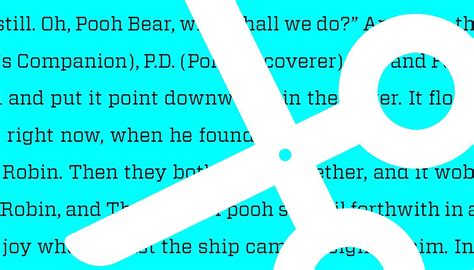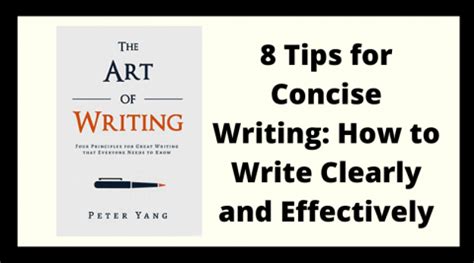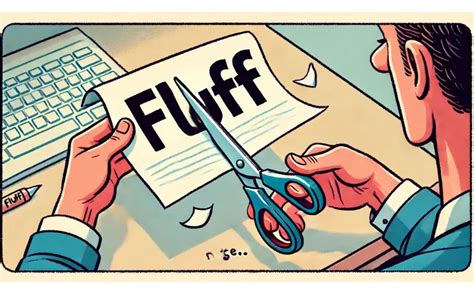In an age of information overload, clarity is not just a virtue; it’s a necessity. Whether you’re writing an email, a report, a blog post, or a novel, your goal should be to convey your message efficiently and effectively. Yet, many writers inadvertently sabotage their efforts by cluttering their prose with jargon and fluff. Learning to ruthlessly cut these elements is the key to unlocking concise, clear, and compelling communication.
The Twin Saboteurs: Jargon and Fluff
Before we can cut them, we must understand what they are.
What is Jargon?
Jargon refers to specialized words or expressions that are used by a particular profession or group and are difficult for others to understand. Think of “synergy,” “paradigm shift,” “holistic approach” in business, or highly technical terms in science that aren’t defined for a general audience. While necessary within a specific domain, using it outside that domain alienates readers and makes your text inaccessible.
What is Fluff?
Fluff, on the other hand, consists of words, phrases, or sentences that add no new meaning or information. It inflates word count without adding substance. Examples include redundant phrases like “basic fundamentals,” wordy constructions like “due to the fact that” (instead of “because”), or unnecessary adverbs like “very much so.” Fluff dilutes your message and wastes the reader’s time.

Diagnosing Jargon: Is Your Language Alienating?
The first step to cutting jargon is to identify it. Ask yourself: “Who is my audience?” If you’re writing for experts in a niche field, some specialized terms might be appropriate. But for a broader audience, clarity trumps specificity.
- Audience Test: Read your text from the perspective of someone outside your field. Would they understand every term?
- The “Why?” Test: For every specialized term, ask “Why am I using this word?” If a simpler, more common word conveys the same meaning without loss of precision, use it.
- Replace with Plain Language: Instead of “leverage capabilities,” try “use skills.” Instead of “optimize outcomes,” try “improve results.”
Trimming the Fat: Identifying and Eliminating Fluff
Fluff is insidious because it often sounds natural. Here’s how to spot it:
- Redundancy: Look for words that repeat meaning. Examples: “past history,” “future plans,” “completely unique,” “consensus of opinion.” One word is usually enough.
- Wordy Phrases: Replace multi-word phrases with single, powerful words.
- “At this point in time” → “Now”
- “In order to” → “To”
- “Due to the fact that” → “Because”
- “The vast majority of” → “Most”
- Weak Verbs and Adverbs: Passive voice and weak “to be” verbs (“is, are, was, were”) often lead to fluff. Replace “it was decided by the team” with “the team decided.” Cut unnecessary intensifiers like “very,” “really,” “quite.”
- Empty Words: Words like “just,” “simply,” “literally,” “kind of,” “sort of” often add no value and can be removed without changing meaning.

Practical Strategies for Concise Prose
Beyond identifying the culprits, actively employ these techniques:
- Use Strong, Active Verbs: Active voice is almost always more direct and impactful. “The ball was hit by the boy” becomes “The boy hit the ball.”
- Prefer Short Sentences: Break up long, complex sentences into two or three shorter ones. This improves readability and punch.
- Cut Unnecessary Prepositions and Articles: Often, you can streamline phrases. “The needs of the company” becomes “The company’s needs.”
- Combine Ideas: Sometimes, two simple sentences can be combined into one stronger, more concise sentence using a conjunction or by rephrasing.

The Art of Revision: Your Editing Toolbox
Cutting jargon and fluff isn’t a one-time fix; it’s a process of iterative revision.
- Read Aloud: Your ears can often catch awkward phrasing, redundancies, and convoluted sentences that your eyes might miss.
- Set It Aside: Step away from your writing for a few hours, or even a day. A fresh perspective helps you spot areas for improvement.
- Focused Editing Passes: Don’t try to catch everything at once. Do one pass specifically for jargon, another for wordy phrases, and another for passive voice.
- Seek a Second Opinion: A trusted reader can offer invaluable feedback, especially regarding terms they don’t understand or sections that feel tedious.
- Utilize Tools: Grammar checkers and style guides (like Strunk & White’s “The Elements of Style”) can highlight potential areas of verbosity.

Conclusion: The Power of Less
Learning to cut jargon and fluff is an ongoing journey that transforms your writing. By embracing conciseness, you show respect for your reader’s time and intellect, ensuring your message is not just heard, but truly understood. Practice these techniques diligently, and watch your prose become sharper, clearer, and more impactful.





